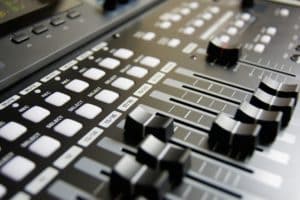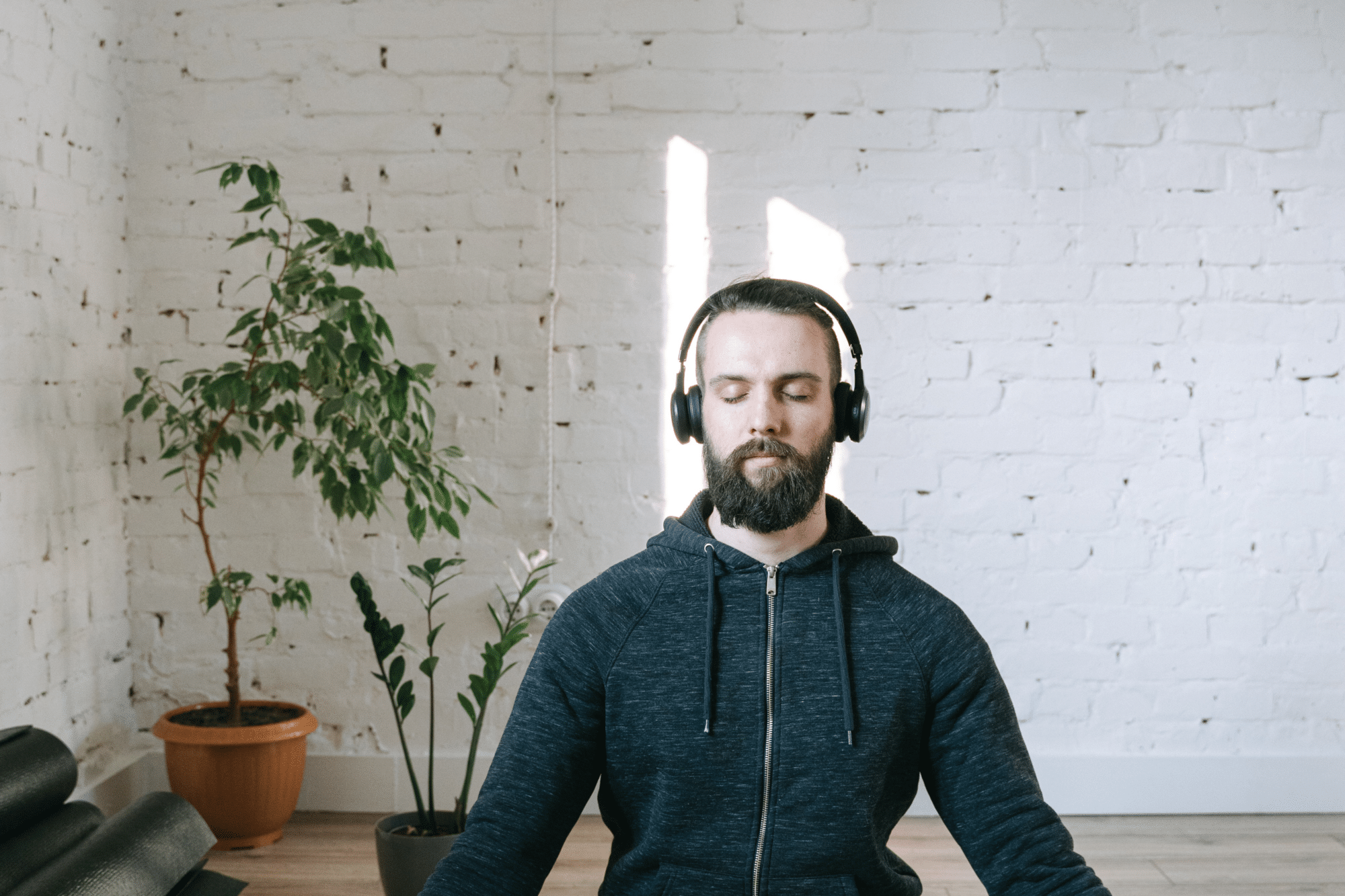Music enriches our lives in many ways, be it through listening to it, dancing to it, creating it, playing musical instruments, and the list goes on – for many, one way or another, music is a fundamental part of daily life.
And there’s a reason for this that goes far beyond the enjoyment factor. Music has the power to create a myriad of effects on the human brain and body, triggering the release of various hormones, affecting our heart rate and breathing, stimulating our brain’s emotional centre, boosting our cognition, and so much more.
From feeling ecstatic, sad, motivated mentally, motivated to move, sway, tap our feet, dance, exercise, the reactions to music are so powerful and varied that music’s ability to affect our brain is far too significant to overlook.
Different sounds, tempos, melodies, and rhythms create different reactions, as can instrumental music versus tracks with lyrics. Our personally unique emotional reactions to music based on memories and experiences takes the wonder of music’s influence a step further still.
Bridging the gap between art and science
Music is one of the most well-known art forms that humans partake in; it is unquestionably, deeply creative, and both making it and engaging with it allow for an endless variety of artistic pursuit and expression.
Yet, fascinatingly, the fundamental nature of music is entrenched in scientific principles, and perhaps this connection is what causes it to bring about such transformative experiences and responses.
Is music just maths?
Essentially, the foundation of music is mathematical principles. Music theory works upon a clearly set-out structure of notes and the intervals between them, (countable) rhythms, ‘equations’ between notes that either work harmoniously or don’t, and so on.
The theory of music is very ‘left brain’ – handling calculations, reading, writing, and logic – yet the creation (or enjoyment of) a piece of music is arguably highly ‘right brain’ in nature (dealing in images, intuition, emotions, etc.).
This dichotomy is at the heart of the wonder of music, and may hold the key to unlocking why music has such a profound effect on our brain; ultimately, humans are a combination of explainable biology and the mysteries of consciousness, drawing a clear comparison to the merging of science and art that music represents.

The science of sound waves
As well as music theory itself, the sounds of music are also embedded in science, delivered to our ears and senses via sound waves. Sounds occur when an object (i.e. a guitar string, string instruments, vocal chords, etc.) vibrates, disturbing the air surrounding it and sending invisible sound waves outwards.
When you speak or sing a song, these vibrations travel throughout our head and chest, with our unique facial structure, mouths, nasal cavities and more being one of the primary causes of our voices sounding distinct from others. This is why different cultures can produce such wonderfully diverse music and musicians.
Sounds also have different wavelengths and therefore different frequencies, determining whether the note has a higher pitch or a lower pitch. Wavelengths are the distances between the sound waves’ high points, and the number of high points that occur per second determine the frequency.
Scientists can explain how sound is created, how it travels, how it is received by the human ear, and so much more; there is seemingly no end to how intrinsically related science is to the art of music – and it doesn’t end there.
Our very DNA as a song
For decades, scientists have been turning collections of scientific data into sound to explore new ways of spotting patterns.
In the early 1980s, U.S.-based biomolecular engineer and pianist David Deamer noticed that three out of four DNA bases corresponded to musical notes. By playing the notes of some DNA sequences, he discovered that they represented some musical scale chords, and went on to compose melodies including music based on bacterial DNA sequences and the human insulin gene.
More recently, medical molecular biologist Mark Temple, while conducting research for new cancer treatment drugs, developed a system of assigning notes to DNA elements in order to create a combination of both audio and visual display to aid his work.
These melodies proved helpful in assisting him to better identify favourable patterns in the sequences and make more informed choices in his experiment research.
As explained by Temple, ‘DNA is read in the cell by proteins that physically move along the DNA sequence in one direction, from start to end,’ he says. ‘This is like a play-head reading a cassette tape from start to end.’
Music unites humans across all cultures, and while science can theoretically explain it, only human intelligence, coupled with emotion and inspiration, can create it.

Music’s profound effect on well-being
There is an ever-growing body of evidence to support the power that music has to create a host of meaningful changes in our minds and body. Research tells us that any kind of musical experience, be it playing, singing, or listening to it, can positively impact our well-being, even to the same extent that exercising can.
A meta-analysis study in the Journal of the American Medical Association (JAMA) demonstrates the varied positive well-being benefits of music. The analysis covered 26 prior studies spanning data from 779 participants from multiple countries of origin, including the United States, the United Kingdom, and Australia.
All studies examined the various impacts that different forms of music can have on health; how cancer patients’ lung function and quality of life can be impacted by choral singing, how gospel music has the power to positively impact heart health, how performing arts, in general, can boost overall health, and more.
Research clearly demonstrates that when we listen to music that is enjoyable to us, our brains release dopamine (a type of neurotransmitter chemical released by the brain to make us feel good). Music, therefore, enables us to quickly and effectively reach a more positive emotional state, which in turn provides some level of relief from stress and lower mood states.
The aforementioned meta-analysis was subsequently compared to other research examining the effects of non-medical health interventions, such as exercise and weight loss, in the absence of any exposure to music. The findings clearly show that musical interventions are of equal beneficial impact on mental health as non-music options like exercise.
Furthermore, a subgroup analysis found that existing treatments with the addition of music brought about significant mental health improvements when compared to non-music treatment alone.
In addition to these and many other pivotal findings, research published by the World Health Organization demonstrates that the arts in general (including music) can improve general health and feelings of well-being.
Recent research also found that choosing to play music regularly can have a small yet significantly positive impact on our cognitive function, possibly even lowering the risk of dementia.
Music and sleep
A growing body of research also exists specifically in the area of how music can affect sleep. Relaxing music has the power to improve sleep through effects including:
- Slower breathing
- Lowering of heart rate and blood pressure
- Reducing anxiety, stress, and troublesome thought patterns
- Quieting the nervous system
- Easing muscle tensions
- Aiding the release of hormones that promote sleep, such as serotonin, melatonin, and oxytocin
- Reducing hormones that negatively impact sleep, such as cortisol
Relaxing music is known to trigger changes within the body that align with a sleep state; slower breathing, lower blood pressure, and a slower heart rate are all some of the physiological changes that both falling (and being) asleep and listening to relaxing music can induce.
Additionally, certain types of music can have a soothing effect on our mental processes, easing anxiety, reducing stressful thought patterns, and calming the emotional centre of the brain.
A variety of studies show that listening to relaxing music at bedtime can improve the quality of sleep in children, young adults, and older adults too.
In addition, research also demonstrates that listening to appropriate music before bedtime can help to improve the quality of sleep in those who suffer from insomnia.
Studies also show that music can improve sleep efficiency – in other words, the quality of our sleep. Sleep efficiency is the measurement of time spent asleep in relation to the total time spent in bed. Lower sleep efficiency is an indication of poor sleep quality due to restlessness, difficulty falling asleep, waking frequently and early, and having trouble going back to sleep.
When we listen to soothing music before we go to sleep, we are essentially tuning our bodies into the state of optimal sleep mode, physically, chemically, psychologically, and even emotionally. Music can, therefore, also help us to fall asleep more quickly.
Listen: Meditation Sleep Music
Chronic sleep disorders
According to a variety of research findings, music can be an effective treatment for both chronic and short-term sleep disorders. The therapeutic sleep benefits of music are also shown to increase over time with consistent use.
Chronic sleep disorders are common in people who have experienced significant emotional and/or physical trauma, and research shows that music therapy can help to lower anxiety and improve sleep quality for such individuals.
Sleep disturbances are often experienced by those suffering from anxiety and depression, and both the sleep and mental/emotional wellness of these individuals can be improved by regular exposure to relaxing music as a therapy tool. Listening to relaxing music can reduce cortisol (the body’s natural stress hormone), and improvements in sleep and mood are also seen in research into the effects of music on people with schizophrenia.
Myndstream and SleepScore Labs’ collaborative research programme
To further our understanding of how music affects sleep and how to best create perfect music to aid optimal sleep quality, Myndstream is taking part in a collaborative research programme with leading sleep experts, SleepScore Labs.
According to Chief Scientific Officer of SleepScore Labs, Roy Raymann, Ph.D., recent advancements in sleep measurement technologies are allowing researchers to accurately measure sleep in a real-world, familiar bedroom setting in a non-obtrusive way, leading to a whole new frontier in applied sleep research.
‘What we know about sleep will no longer be mostly derived from small sample sleep laboratory studies. Now, our sleep knowledge will grow using all the insights gathered from this new type of accurate and ecologically valid sleep data. Executing product validation studies and analysing big sleep data is just the beginning of exploration into the new possibilities these technologies offer,’ said Raymann.
These tech advancements are expected to glean exciting new insights into the science behind music therapy for sleep improvement – invaluable insights that will allow Myndstream’s sleep music curations to be even more effective than ever before, and backed by the latest scientific research for optimal efficacy.
Music for pain relief
Another powerful effect that listening to music can have on our well-being (and, inadvertently, our quality of sleep) is the possibility of a reduction in pain. Physical pain and general bodily discomfort is an understandable barrier to good quality sleep. Experiencing poor quality sleep due to pain is a vicious cycle, as insufficient and/or low-quality sleep can increase our sensitivity to physical pain (and emotional distress, which is also vulnerable to the same negative cycle).
Research findings into music’s effect on pain include:
- Exposure to soothing music can reduce chronic and acute pain, including pain that is hard to treat, such as with chronic conditions like fibromyalgia.
- A meta-analysis of over 70 studies found that exposure to soothing music before, during, and after surgical procedures can help to reduce pain and anxiety in patients – those who listened to music were also less reliant on pain-relieving medications.
- Music can effectively improve pain due to its ability to stimulate the immune system, relieve anxiety, and facilitate the release of distressing emotions, demonstrating a range of well-being benefits that, in turn, reduce the extent of suffering physical pain.
The research supporting music’s ability to relieve pain and suffering is considerable and growing, but scientists are yet to fully understand why music has such powerful effects. Nevertheless, the benefits of stimulating happy hormones, reducing cortisol, and easing tension and anxiety are just some of the well-established benefits at play.
Research clearly points to the conclusion that humans are hard-wired to respond meaningfully to music, and some experts predict that in the near future, music therapy may play a significant role in the treatment of serious conditions such as stroke and Parkinson’s disease.

Music for enhanced performance
In addition to easing tensions and improving sleep, there are some considerable mental and physical performance-related benefits to music that research is uncovering.
Enhanced focus
Evidence suggests that exposure to certain types of music can enhance our ability to concentrate, focus, and perform more productively in terms of brain cognition; this is often referred to as the ‘Mozart Effect’ due to the theory that listening to the music of Mozart can temporarily boost IQ test scores.
That said, the science of music’s ability to improve focus brings about varied results, as the effects of music on cognitive focus vary significantly from person to person. Instrumental music (music without lyrics) is typically associated with increased concentration, as lyrics can distract the thought process.
Increased stamina and improved physical performance
It’s very common for exercise to be accompanied by upbeat, motivating music, and research findings certainly back up the theory that music can increase our determination and stamina during physical exercise.
As well as increasing stamina, music is found to increase our drive to push ourselves further physically, achieving greater output and performance levels while working out – it also makes harder workouts feel more satisfying and enjoyable.
Upbeat music is not surprisingly the most popular go-to music choice for working out (although slower music and ballads are often used in calmer physical practices such as yoga). Researchers have found that music with a tempo in the range of between 120 and 140 BPM (beats per minute) is optimal for enhanced physical performance.
Heightened creativity
According to a 2017 study, listening to upbeat, happy music can stimulate increased innovative thinking and creativity. The music that elicits this response can differ from person to person, but generally speaking, whatever music makes you feel positive and more energised can impact your feelings of motivation and creativity.
Music Meets Science – A Live Experience
Myndstream is at the forefront of research related to how music affects our brain and well-being. At the 2022 Global Wellness Summit (GWS), Myndstream’s MD, Freddie Moross, together with Professor Adam Ockelford, Director of the Applied Music Research Centre University of Roehampton, London, and musical savant, the pianist Derek Paravicini presented Music Meets Science – A Live Experience. In this unique exploration of the scientific approach to music, the esteemed trio showcased and discussed the value that scientifically-proven links between music and health has for supporting our wellbeing.
The presentation also included a dazzling presentation by renowned neurodivergent musician Derek Paravicini, exploring the powerful effect that music can have on individuals with neurodivergence such as autism.
Myndstream also featured in the Global Wellness Institute’s (GWI) launch of its BBC StoryWorks series In Pursuit of Wellness. The episode Music and Neurodiversity focused on Myndstream’s collaborative pilot study with Junior Genius, studying the role that music therapy can play in positively impacting educational environments, particularly in terms of working with autistic and other neurodivergent children.
As Professor Ockelford states in Music for Neurodiversity, since humans first began creating forms of music approximately half a million years ago, it’s become increasingly evident that music forms an integral part of our neural architecture. With language coming along some 300 thousand years later, it’s clear that music has the power to ‘transcend boundaries.’

Why businesses are harnessing the power of music
Given the extent to which scientific-based research supports the theory that music can have a profound effect on cognition, sleep, physical and mental performance, creativity, and more, it’s no wonder that more and more businesses are harnessing the power of music to improve customer experiences.
In the spa industry alone, music is a fundamental component of the experience of treatments, with carefully curated playlists significantly enhancing feelings of relaxation, stress relief, healing, and overall well-being. Myndstream features a specifically curated collection of music dedicated for use in the spa industry, with many spa businesses utilising the spa music service to enhance their customer’s experience while elevating the mood and morale of staff at the same time.
Myndstream music – combining art and science for powerful results
By harnessing the insights of science and research, we can continuously improve music curations designed for specific applications – knowing what music to play when, which songs and styles of music are the best choice for particular times, activities, desired outcomes, etc.
This is Myndstream’s mission – to elevate the audio experience for all through its intrinsic relationship with both music and science. Myndstream utilises the rigour of scientific research to enhance the creative, artistic process and create the highest quality music-led well-being programmes. Myndstream’s priority focus is to elevate the audio experience within business environments through its own platforms, as well as make its music accessible directly to consumers through the main streaming platforms.



